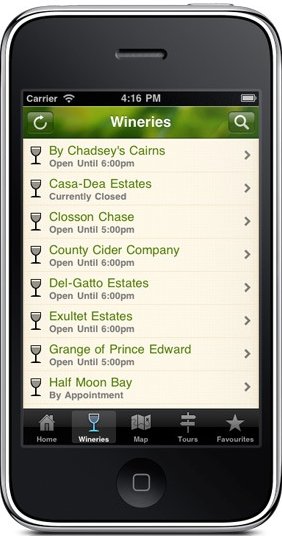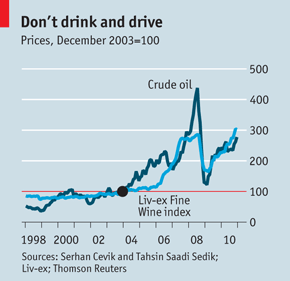Michael Pinkus has more than a couple of bones to pick with Ontario wineries:
This is what I wrote while sitting at my table just minutes after my Cuvee pre-tasting:
“Here I sit tasting the wines from the fruit of the labour of Ontario winemakers for the 2011 Cuvee media pre-tasting … It is here we taste what the competition organizers and judges have deemed the best. Actually let’s get more specific, before us is one wine from each winery that entered the competition and we are told “These wines represent each participating winery’s top scoring wine from the Cuvee judging held in January”. In other words these are the top scoring wines from each individual winery’s submission … 62 wines in total. [. . . A few] were fantastic, well made wines worthy of their price (especially the Pelham which was an absolute steal at $24.95). But then there were others, whom I will not mention here by name but instead by price: a $45 Reserve Cabernet Franc, a $45 Cab-Merlot, a $55 Red Blend, a $40 Reserve Franc and a $35 Red Blend, that should all be ashamed of themselves for unleashing sub-par quality at astronomical prices. I’m talking about sub-par wines at above par prices for what the consumer is getting. This is not just about hurting the individual winery’s reputation but also, as one colleague pointed out to me, Ontario’s reputation as a whole. It’s time to stop trying to get all your money back at one shot — this is a long term investment people, and a tough one at that.
[. . .]
I was prepared to post that on the blog and just walk away (in effect, putting my own head in the sand) letting the chips fall where they may, but then it started to eat at me more and more. I want to keep writing about his industry, but what can I say? The final straw happened two days later at the bi-weekly media LCBO Vintages tasting and I have to admit to you I was appalled by a few of the Ontario wines being offered. I hopped on the train back home and found myself thinking about both tastings and penned the following:
I have been gentle on some of you over the years but seriously if these wines represent the best Ontario has to offer, give me a break. If the wines I tried at the Cuvee preview are some of the best wines wineries have to offer, then some wineries are in BIG trouble: (what was with that nasty-ass Merlot Icewine?). Don’t care what they submit: (a flat, flabby, bland Sauvignon Blanc, is that really what your winery does best?). Have given up: (a Gewurzt that has no Gewurzt characteristic to it what-so-ever). Are not paying attention: (a fume blanc so heavy handed on the fume that there was no fruit at all). And are just wasting grapes: (a poor excuse for an ’07 made with Franc and Sauv, an ’07!!!).
Two days later, at the LCBO Vintages tasting (for the March 19, 2011 release) I had to pull out my best conspiracy-theory to explain some of the Ontario wines we sampled. I know full well that the LCBO isn’t trying to be helpful to the Ontario wine industry, but never did I think they would stoop to this level: the tasting included a lackluster Sauvignon Blanc and a horrible Red Blend (you know who you are) … I suggest to you that the LCBO takes some of these atrocious wines to make Ontario look bad … advertise a red, from a good vintage like 2005, for under $15, and people will buy it, sip on it and just as quickly spit it out, vowing never to buy Ontario wines again. Thanks for nothing LCBO.
I’m not saying they do that with every Ontario wine (case in point: Cave Spring Cellars 2009 Estate Gewurztraminer), but I think they throw in a ringer every-so-often just to screw with their major competition, the wineries. Am I just paranoid? Well find out for yourself, buy each and every Ontario wine that comes thru Vintages and you tell me they are in the caliber claimed by the Board’s Vintages website: “the fine wine and premium spirits business unit of the LCBO. Our experts shop the world for fine wine and premium spirits of exceptional value.” Now, not every wine is to everybody’s taste you’ll say — true — but some of those wines the board tries to pawn off as “fine” are only fine for salad purposes and that’s all. I don’t buy this argument. As they say on ESPN NFL Football broadcasts, “C’mon Man”, this just ain’t happening.
Sturgeon’s Law claims that “Ninety percent of everything is crap”, and that applies to wine just as much as it does to novels. A big difference for wine is that even the crap is far better than it was just ten years ago. Nowadays, a crap wine is merely boring, not undrinkable as they once were. But that being said, Michael’s comments are worth paying heed — Ontario’s wine industry has problems galore from nature (cool climate wine production but a customer base accustomed to imported hot climate wines), legal obstacles (Ontario still treats wineries as if they produce radioactive waste, not wine), and the normal exigencies of competition: there’s no need to compound these problems with avoidable ones like poor quality control or (as Michael suggests) contempt for their customers.

 Touring the wineries of Prince Edward County? Plan your trip with WineTour, and find your way around the area with ease. We’ve collected all of the details you need to get the most out of your visit — so you’ll know what’s on, where the nearest wineries are, and what hours they’re open.
Touring the wineries of Prince Edward County? Plan your trip with WineTour, and find your way around the area with ease. We’ve collected all of the details you need to get the most out of your visit — so you’ll know what’s on, where the nearest wineries are, and what hours they’re open. Wine experts usually explain price movements by supply-side factors such as the effects of the weather and age, but research by Serhan Cevik and Tahsin Saadi Sedik, economists at the IMF, finds that supply has only a small impact on prices. Instead, fast economic growth in emerging economies has been much more important in recent years — as is the case for oil and other commodity prices.
Wine experts usually explain price movements by supply-side factors such as the effects of the weather and age, but research by Serhan Cevik and Tahsin Saadi Sedik, economists at the IMF, finds that supply has only a small impact on prices. Instead, fast economic growth in emerging economies has been much more important in recent years — as is the case for oil and other commodity prices.

